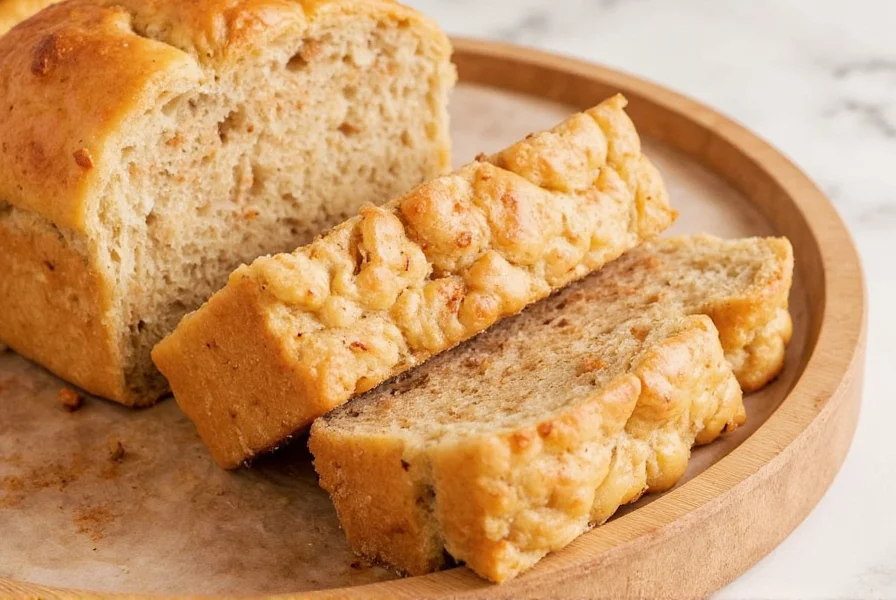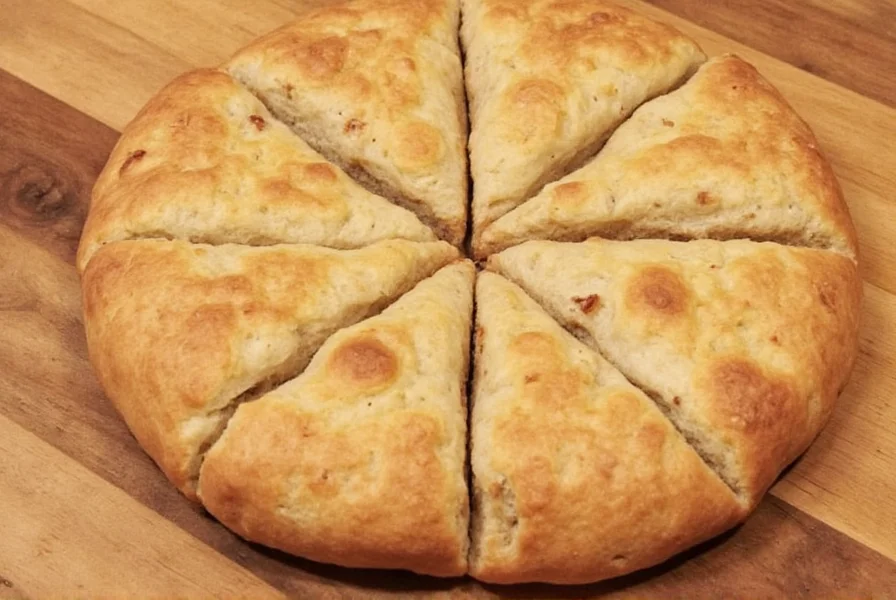Transforming classic focaccia into a delightful sweet treat, cinnamon focaccia bridges Italian baking tradition with comforting spice flavors. This aromatic bread combines the signature dimpled texture of authentic focaccia with the warmth of cinnamon sugar, creating a versatile baked good perfect for brunch, dessert, or afternoon tea. The magic happens when quality ingredients meet proper technique—flour, yeast, water, and olive oil form the foundation, while cinnamon and sugar elevate it from savory staple to sweet sensation.
What Makes Cinnamon Focaccia Special
Traditional focaccia gets a sweet makeover with this simple yet sophisticated variation. While classic focaccia features rosemary and sea salt, cinnamon focaccia replaces these with ground cinnamon and sugar, creating a dessert-friendly version that maintains the bread's characteristic air pockets and chewy texture. The olive oil remains essential, providing moisture and helping the cinnamon sugar topping caramelize beautifully during baking.
Essential Ingredients Breakdown
The beauty of cinnamon focaccia lies in its simplicity. You'll need basic bread ingredients plus a few sweet additions:
| Ingredient | Function | Substitution Options |
|---|---|---|
| All-purpose flour | Structure foundation | Bread flour (for chewier texture) |
| Active dry yeast | Rising agent | Instant yeast (same quantity) |
| Olive oil | Moisture and flavor | Vegetable oil (less distinctive flavor) |
| Cinnamon | Primary flavor | Ceylon cinnamon (sweeter, more delicate) |
| Granulated sugar | Sweetness and caramelization | Brown sugar (for deeper flavor) |

Step-by-Step Preparation Guide
Creating perfect cinnamon focaccia requires attention to detail at each stage. Follow these steps for bakery-quality results at home:
Dough Preparation (1.5 hours)
- Mix 3½ cups flour, 2¼ tsp yeast, 2 tbsp sugar, and 1½ tsp salt in a large bowl
- Add 1¼ cups warm water (110°F) and ¼ cup olive oil, stirring until shaggy dough forms
- Knead 8-10 minutes until smooth and elastic (by hand or mixer with dough hook)
- Place in oiled bowl, cover, and let rise until doubled (about 1 hour)
Shaping and Second Rise (45 minutes)
- Press risen dough into a 9x13 inch oiled baking pan
- Create signature dimples with fingertips, pressing nearly through the dough
- Drizzle with 2 tbsp olive oil, ensuring it settles into dimples
- Cover and let rise 30-45 minutes until puffy but not doubled
Baking and Finishing (25 minutes)
- Preheat oven to 425°F with rack in center position
- Mix ¼ cup sugar with 1½ tbsp cinnamon for topping
- Sprinkle cinnamon sugar evenly over dough just before baking
- Bake 20-25 minutes until golden brown and internal temperature reaches 200°F
- Cool 10 minutes in pan before transferring to wire rack
Proven Baking Techniques for Perfect Results
Achieving professional-quality cinnamon focaccia at home requires understanding these critical techniques:
Dough Hydration Matters
The ideal hydration level (water-to-flour ratio) creates that signature focaccia texture. For cinnamon focaccia, aim for 65-70% hydration. Too dry yields dense bread; too wet prevents proper dimple formation. Adjust water slightly based on flour type and humidity.
The Dimple Technique
Pressing dimples serves multiple purposes: it controls rising, creates pockets for olive oil and cinnamon sugar, and gives authentic appearance. Use fingertips (not knuckles) and press firmly but gently, almost through the dough. Space dimples evenly about 1½ inches apart.
Olive Oil Selection
Choose a mild extra virgin olive oil—not too peppery—to complement rather than overpower the cinnamon. The oil should be fruity with moderate bitterness. Avoid robust oils that might clash with sweet spices.
Popular Variations to Try
Once you've mastered the basic cinnamon focaccia recipe, experiment with these delicious variations:
- Cinnamon-Raisin Focaccia: Add ½ cup plump raisins during final kneading
- Apple Cinnamon Focaccia: Layer thin apple slices before adding cinnamon sugar
- Cinnamon-Orange Focaccia: Add 1 tbsp orange zest to dough and use orange blossom honey glaze
- Streusel-Topped Cinnamon Focaccia: Add crumb topping before baking for extra texture
Serving Suggestions and Pairings
Cinnamon focaccia shines in multiple contexts. Serve warm for best texture and aroma:
- Breakfast: Pair with Greek yogurt and fresh berries for balanced sweetness
- Brunch: Accompany with creamy scrambled eggs or frittatas
- Dessert: Serve with vanilla ice cream and caramel sauce
- Afternoon tea: Enjoy with strong black tea or spiced chai
Storage and Reheating Tips
Proper storage maintains cinnamon focaccia's quality:
- Room temperature: Store in airtight container for up to 2 days
- Freezing: Wrap tightly in plastic then foil; freeze up to 3 months
- Reheating: Warm in 350°F oven for 8-10 minutes (avoid microwave for best texture)
- Reviving stale bread: Spritz with water and reheat to restore moisture
Troubleshooting Common Issues
Even experienced bakers encounter challenges. Here's how to solve frequent cinnamon focaccia problems:
- Dense texture: Likely underproofed—allow sufficient second rise time
- Burnt topping: Apply cinnamon sugar later in baking or reduce oven temperature
- Collapsed center: Oven temperature too high or dough overproofed
- Dry crumb: Measure flour correctly (spoon and level) and don't overbake
- Weak cinnamon flavor: Use fresh cinnamon and consider adding extract to dough
Final Tips for Cinnamon Focaccia Success
Mastering cinnamon focaccia requires balancing technique with quality ingredients. Remember these key points for consistent results:
- Use fresh yeast and check expiration dates for reliable rising
- Maintain proper dough temperature (75-80°F) during rising
- Don't skip the dimpling step—it's essential for authentic texture
- Apply cinnamon sugar just before baking to prevent sinking
- Invest in an instant-read thermometer for perfect doneness
Frequently Asked Questions
Can I make cinnamon focaccia without yeast?
Yes, you can create a quick version using baking powder as the leavening agent. Replace yeast with 1½ tablespoons baking powder and add ½ teaspoon cream of tartar for better rise. The texture will be more cake-like than traditional yeast-risen focaccia, but still delicious as a sweet quick bread.
Why is my cinnamon focaccia too dense?
Dense cinnamon focaccia typically results from underproofing, incorrect flour measurement, or old yeast. Ensure your dough doubles in size during the first rise and becomes noticeably puffy during the second rise. Measure flour properly by spooning into measuring cups and leveling off—don't scoop directly. Verify your yeast is fresh and activated properly in warm (not hot) water.
How do I prevent the cinnamon sugar from burning?
To prevent burnt cinnamon sugar, apply the topping during the last 5-7 minutes of baking rather than at the beginning. Alternatively, cover loosely with foil after the first 15 minutes of baking. Using a moderate oven temperature (400-425°F) rather than higher heat also helps prevent burning while ensuring proper cooking.
Can I make cinnamon focaccia gluten-free?
Yes, use a high-quality gluten-free bread flour blend with xanthan gum included. You'll need to increase hydration slightly (add 1-2 tablespoons extra water) as gluten-free flours absorb more moisture. The texture will differ from traditional focaccia but can still be delicious with proper technique and a 30-minute rest after mixing to allow flours to hydrate fully.
What's the best way to store leftover cinnamon focaccia?
Store cooled cinnamon focaccia in an airtight container at room temperature for up to 2 days. For longer storage, wrap tightly in plastic wrap then aluminum foil and freeze for up to 3 months. Avoid refrigeration as it accelerates staling. To refresh, warm in a 350°F oven for 8-10 minutes rather than using a microwave, which creates a gummy texture.











 浙公网安备
33010002000092号
浙公网安备
33010002000092号 浙B2-20120091-4
浙B2-20120091-4